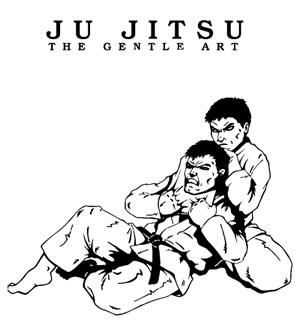Difference between Aikido and Jujitsu
Key difference: Aikido and Jujitsu are traditional Japanese art forms, while, Jujitsu is Aikido's Ancestral art form. Both the art forms differ in their techniques and implementations. Aikido is a sophisticated martial art form as compared to that of Jujitsu, which is more combat and attacking sort of art form.
 Aikido is the most complicated Japanese martial art form. It is a perfect harmonization, peace and self-defense method. Its founder was Morihei Ueshiba (1886-1969), who studied many traditional combative arts. The martial art uses locks, holds, and throws to perform the attacks, which are categorized and instantly carried out with the opponent’s movement and actions.
Aikido is the most complicated Japanese martial art form. It is a perfect harmonization, peace and self-defense method. Its founder was Morihei Ueshiba (1886-1969), who studied many traditional combative arts. The martial art uses locks, holds, and throws to perform the attacks, which are categorized and instantly carried out with the opponent’s movement and actions.
The word Aikido in Japanese is made up of three characters called kanji.
Ai – joining, unifying, combining, fit
Ki – spirit, energy, mood, morale
Dō – way, path.
Aikido helps an individual to maintain the physical and psychological balance. It is performed with blending moves and actions, which are performed in accordance to the opponent’s actions. It is a way of achieving harmony along with the technical skills and actions. Along with the actions, it also includes self defense and personal development. It is practiced on principles of harmony, and non-resistance. It comprises of footwork, which are practiced in a linear and circular manner. These actions off-balances the attacker and apply the joint-locking or throwing techniques. All its actions require a minimal amount of physical energy, as the Aikidoka (aikido practitioner) leads the attacker's momentum using entering and turning movements. In modern living, this art form is considered to be a great way to improve the physical fitness and gain harmony. It also helps in reducing the stress level in an individual’s life. It is said that, the art, can be understood by two fundamental principles:
- A commitment to peaceful resolution of conflict whenever possible
- A commitment to self-mastery through Aikido training
 Jujutsu (can be spelled as jujitsu, ju-jutsu or ju-jitsu) is an ancient Japanese martial art form. It’s a method of close combat generally used for defeating an armed and armored opponent. The opponent can be without weapons or with a short weapon. Its origin was traced some 2500 years ago; it was founded by Takenouchi Hisamori, a military tactician and lord from Mimasaka Province.
Jujutsu (can be spelled as jujitsu, ju-jutsu or ju-jitsu) is an ancient Japanese martial art form. It’s a method of close combat generally used for defeating an armed and armored opponent. The opponent can be without weapons or with a short weapon. Its origin was traced some 2500 years ago; it was founded by Takenouchi Hisamori, a military tactician and lord from Mimasaka Province.
The term, Jujutsu can be translated as:
"Jū" -"gentle, soft, supple, flexible, pliable, or yielding.
"Jutsu"- “art” or “technique”. It generally represents manipulating the opponent's force against the practitioner rather than confronting it with one's own force.
The art Jujutsu was developed among the Samurais, which belonged to feudal Japan. It is based on the principles of utilizing the attacker’s energy against the practitioner, rather than the direct attack implementation on the opponent. It is a form of a gentle art, and is commonly addressed as "Way of Flexibility". It is art form which is especially designed as a combative art form. The art is formed entirely depending on the opponent’s attacks and actions. Today, there are commonly four forms of Jujutsu:
- Sport
- Grappling
- Self defence and awareness
- The total martial art
Comparison between Aikido and Jujitsu:
|
|
Aikido |
Jujitsu |
|
Origin |
Aikido originated in the 1920′s. |
Jujitsu originated in the 17th century. |
|
Strengths |
Here the strength emphasizes more on endurance, flexibility, and controlled relaxation. |
Here, the main strengths are in the momentum based on opponent’s force, balance and leverage. |
|
Motive |
The opponent is not attacked with a motive causing hurt. |
The opponent is attacked with a motive of causing hurt or real attack. |
|
Techniques |
The techniques are based on harmony and are not that complex as compared to that of Jujitsu. |
The techniques are based on more complex and deadly methods. |
|
Weapons utilized |
Aikido employs short staff, wooden sword and also knives. |
Jujitsu employs knives, weighted chains, and helmet smasher. |
|
Focuses more on |
Here the focus is more on the attacker’s feet. |
Here the focus is on wrist and elbows. |
|
Techniques |
|
|
Image Courtesy: superaction.com









Add new comment